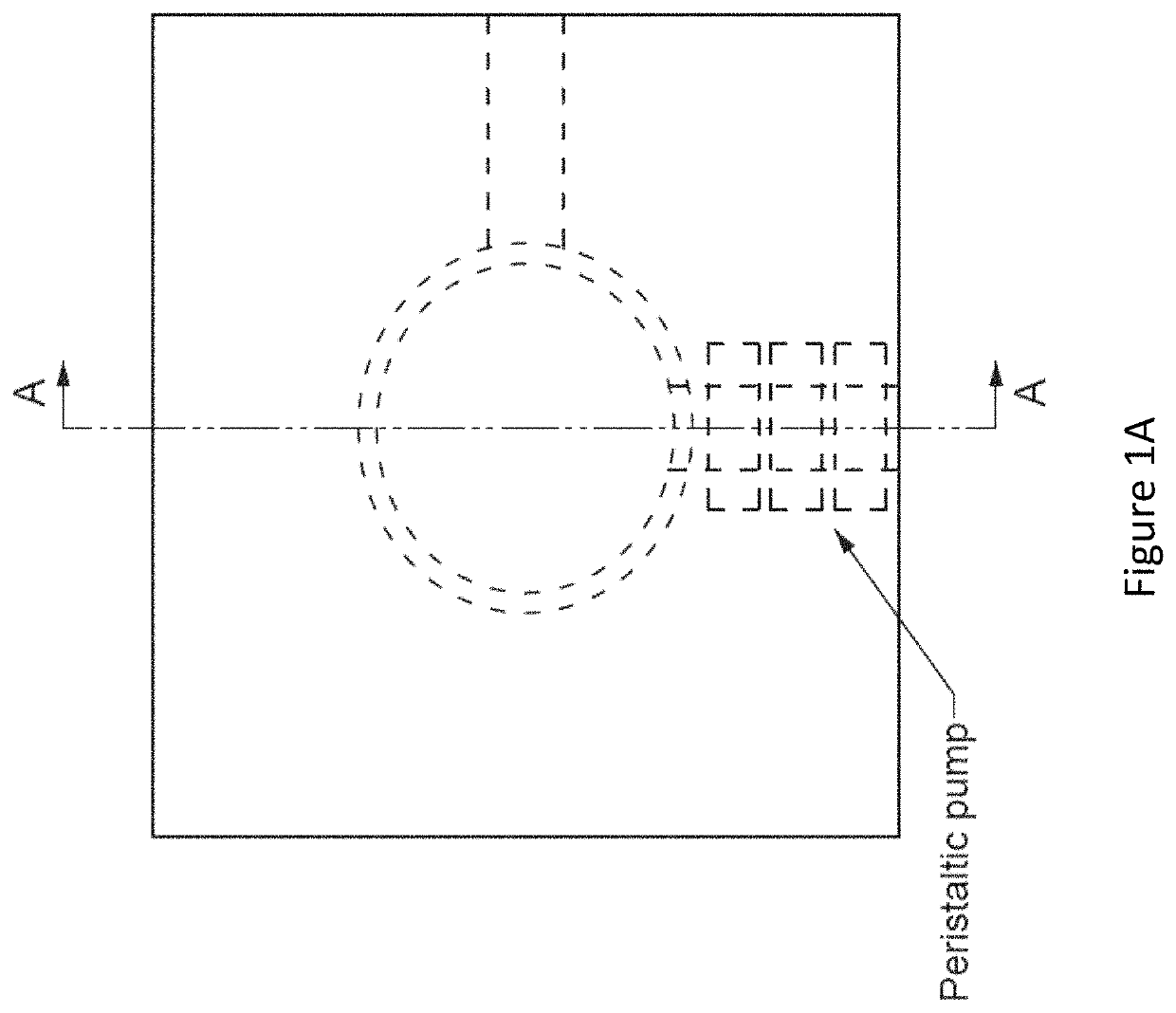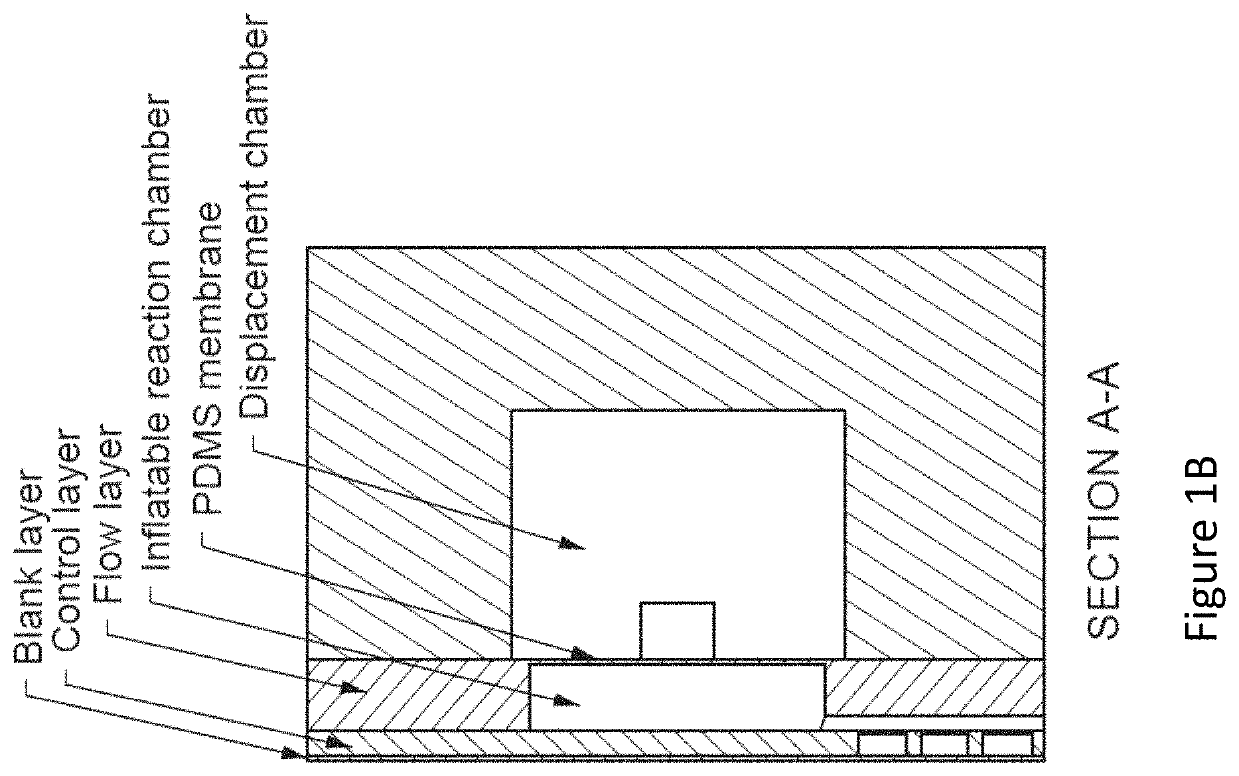Methods for analyzing genomic variation within cells
a genomic variation and cell technology, applied in the field of methods for analyzing genomic variation within cells, can solve the problems of amplification bias, over-representation of certain regions of the genome and under-representation of others, and insufficient genomic dna extracted from this biopsy, etc., to achieve robust and scalable effects
- Summary
- Abstract
- Description
- Claims
- Application Information
AI Technical Summary
Benefits of technology
Problems solved by technology
Method used
Image
Examples
example 1
brary Generation
[0274]The following example is further illustrated in FIGS. 18 and 19.
[0275]Pre-Treatment Before Loading Cells on a Custom Microfluidic Device:
[0276]Cells were washed and re-suspended in fresh PBS at a 1e6 cells / mL concentration and filtered using a 40 μm filter to remove cell debris and clumped cells. The filtered cells were stained using Syto 9 DNA stain. 10 μl of stained nuclei were mixed with 8 μl PBS, and 2 μl loading buffer [81.25 μl Percoll, 15 μl Superblock, 3 μl EDTA, 0.75 μl Tween 20 (10%)]. The ratio of PBS and loading buffer was optimized for neutral nuclei buoyancy.
[0277]Library Preparation on Custom Microfluidic Device:
[0278]Prior to loading, cell sorting channels were primed with 1% BSA or 100% Superblock solution. The cell suspension was connected to the primed microfluidic device, where single cells were isolated from the suspension using mechanical cell traps. The trapped single cells were washed with PBS to remove untrapped cells, cell debris and e...
example 2
de Haplotyping Using Fragmentation Sites to Reconstruct Homologous Chromosomes
[0282]Genomic DNA from a single cell is fragmented. The fragmented DNA comprises non-overlapping fragments of the maternal and paternal chromosome. The fragmented DNA is amplified to generate enough mass for DNA sequencing.
[0283]The amplified products are sequenced and the sequence reads of the fragments are obtained. The sequence reads are used to reconstruct maternal and paternal chromosomes by bioinformatically connecting contiguous fragments that share a unique fragmentation site on the same chromosome (FIG. 20). As detailed herein, these methods can be carried out in small volumes (e.g., 400 nL).
example 3
ll Nanolitre-Volume MDA
[0284]Cells were resuspended in PBS supplemented with 5% glycerol, adjusted to a concentration of 1 cell / 8 nL, and stained with SYTO9 DNA stain. The stained cells were identified later by fluorescent microscopy.
[0285]143 droplets, each composed of 8 nL of the cell suspension, were deposited onto a PDMS coated surface using a piezoelectric spotter. Thus, droplets containing single cells were obtained by limiting dilution. The substrate was then imaged using a fluorescent microscope to count the number of cells in each droplet. In general, observed single-cell occupancy was close to the theoretical maximum of 37% predicted by the Poisson distribution. 6 nL of alkaline buffer (KOH 400 nM, EDTA 10 mM, DTT 100 mM) was then deposited on each droplet using the spotter to lyse the cells and denature the double-stranded DNA (1001, FIG. 21).
[0286]All droplets were then covered with light mineral oil. The surface had a barrier composed of PDMS which kept the mineral oil ...
PUM
| Property | Measurement | Unit |
|---|---|---|
| average volume | aaaaa | aaaaa |
| average volume | aaaaa | aaaaa |
| volume | aaaaa | aaaaa |
Abstract
Description
Claims
Application Information
 Login to View More
Login to View More - R&D
- Intellectual Property
- Life Sciences
- Materials
- Tech Scout
- Unparalleled Data Quality
- Higher Quality Content
- 60% Fewer Hallucinations
Browse by: Latest US Patents, China's latest patents, Technical Efficacy Thesaurus, Application Domain, Technology Topic, Popular Technical Reports.
© 2025 PatSnap. All rights reserved.Legal|Privacy policy|Modern Slavery Act Transparency Statement|Sitemap|About US| Contact US: help@patsnap.com



